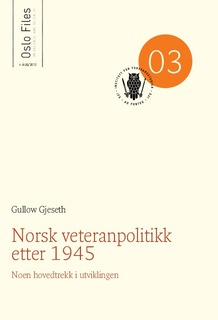| dc.description.abstract | This study examines essential aspects of Norway’s policy on the treatment of veterans since 1945. Veteran schemes were put in place immediately following the Second World War. In the following decades they were debated, redefined and modified with the rapid rise in the number of veterans of international missions. The author describes the complex pattern of interaction between the government and interest organisations, and how they together effected policy changes. Norway’s approach to veterans grew out of the World War. It was originally devised as a mechanism for helping former soldiers, resistance fighters and consentration camp prisoners with physical injuries that rendered them fully or partially unable to work. It only gradually became clear that some were experiencing delayed onset psychological reactions, later recognised as post traumatic stress disorder (PTSD). However, the authorities were slow to recognise the condition, not least because it was difficult to determine whether the experience of war or captivity was the ultimate cause or there were other reasons. Since the start of UNIFIL in 1978, Norway has been continuously involved in one or more international missions. Initially, and partly because peacekeeping rarely involved actual combat, there was limited focus on the soldiers’ exposure to psychological stress and the potential for psychological reactions. During the 1990s, increased focus on the veterans’ predicament resulted in legislative amendments that somewhat improved conditions. Finally, when the reform of the Armed Forces got under way in 2000, the government decided to put together a cohesive policy for veterans, aiming to go beyond a simple injury compensation mechanism. The new policy should ensure that steps were taken before, during and after deployment to prepare soldiers for the entire range of challenges following from participation in international operations. | no_NO |
